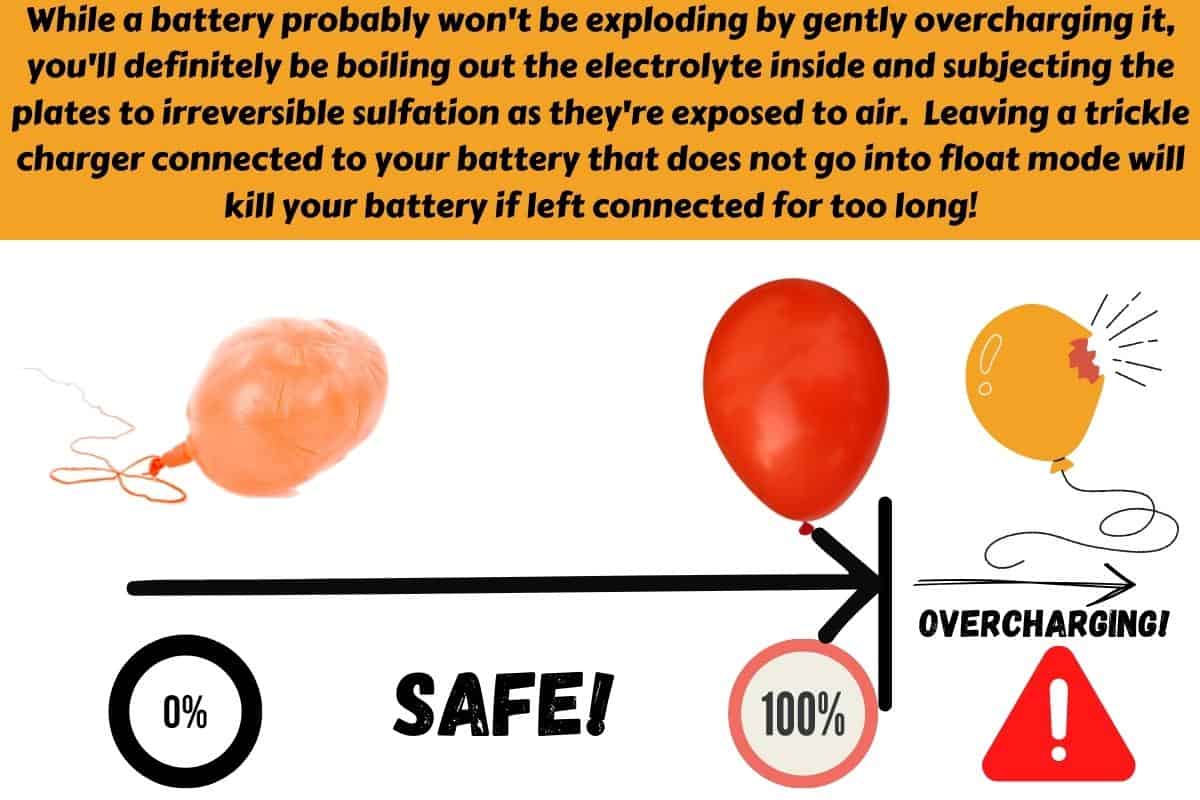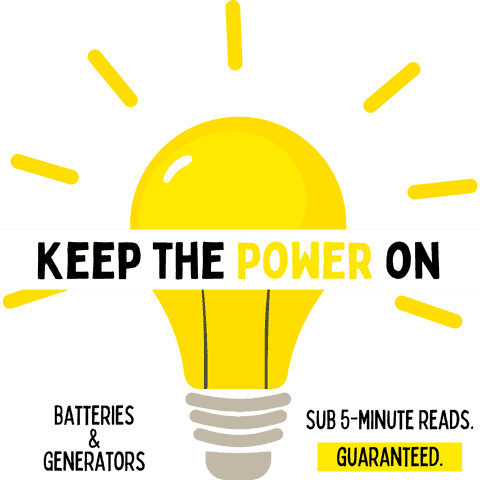When you go to charge a 12-volt battery, you often hook up the charger in the evening and let it go overnight. This is perfectly acceptable for most smart chargers on the market today!
What happens though if you’re using an older charger that specifically says to not leave the charger hooked up after the battery has reached 100% state of charge, or if it specifically says on the charger “do not overcharge battery”?
If you find yourself with one of these chargers, you’ll need to be very careful or to may end up with a defective battery before morning arrives.
This article will show you how to get a ballpark estimate on how to estimate your battery’s charging time so that you don’t ruin your battery.
How Do Old Chargers Ruin Batteries (No Float Mode)
Modern chargers have microprocessors and are essentially basic computers. They monitor the health of your battery in real time and will generally not overcharge it during the charging process and will not continue to charge it if left connected when the battery is at 100%.
These chargers enter into a “Float” or “Maintenance” mode and only emit a small amount of current when the battery drops below 100% through natural self-discharge.
Lots of older chargers would be fine for the charging process itself, but they would continue to pump current into the battery even after it reached maximum capacity. This is like trying to blow up a balloon that is already full. It doesn’t end well.

Essentially, when you overcharge a battery you will overheat it and boil out the electrolyte inside. The rate at which you evaporate out all of your battery electrolyte happens depends on the size of your charger in relation to the battery itself. A 2-amp trickle charger will be more forgiving than a 15-amp charger on a 75Ah marine battery, for example.
How to Estimate 12-volt Battery Charging Times with an Old Charger (No Float Mode)
To estimate charging times with these old chargers, you’ll need a multimeter to check your starting voltage (this also assumes all of your cells are good).
If you have a 100Ah battery and your voltage is at 12.1, then (according to the table below) your battery is at about 50% capacity. You’ll need to replace 50Ah to bring it back up to 100Ah.
A general rule of thumb is that a charger at a specific amp rating will replace that specific number of amp hours (Ah) per hour, plus a little extra for inefficiencies in charging.
So if you’re using a 10-amp charger and need to replace 50Ah, it will take about 5 hours (5 hours x 10-amps = 50). I recommend adding 30-60 minutes extra for any charging inefficiencies.
Checking your final voltage should be done after the battery has been disconnected from the charger and several hours has passed (or put a light load on the battery for a few minutes) to bring down the artificially high voltage from the recently completed charging process. The battery needs to “settle”.
| Battery Voltage | State of Charge (%) |
|---|---|
| 12.65+ | 100 |
| 12.5 | 90 |
| 12.42 | 80 |
| 12.32 | 70 |
| 12.2 | 60 |
| 12.1 | 50 |
| 11.9 | 40 |
| 11.75 | 30 |
| 11.6 | 20 |
| 11.3 | 10 |
| 10.5 | 0 |
